AMD ATHLON 220GE and 240GE [AM4] – Review | hashrate | Test – With the emergence of Zen-based processors, many of today’s famous models of this architecture have easily taken the high-end and middle-end segments, however the force in which the input range was launched did not have as much power However, it is very necessary considering that at this level the real volume is found, when we talk about quantities of processors. At this entry level we find the Athlon, models that based on AMD ZEN cores arrived to give a break to the already passed Bristol Bridge technology.
When the AM4 socket was launched as such at the end of 2016, Bristol Bridge was born, APUs that came based on FM2 + technology but with a DDR4 controller, which gave it a very attractive performance versus FM2 + version, however they were still very much below in its level of CPU computing with respect to what the competition offered at the time, the great difference being the graphic section that these APUs possessed. With an urgent need to refresh the input series AMD launches Athlon models based on Zen cores with Riven Ridge feature, as you can see the Ryzen 3 2200G and Ryzen 2400G, however with smaller features to achieve a Competitive price in the input range.
Using the name given to the famous series that generated more of some headache to the blue side within the history of the processors, the Athlon models for AM4 come in 3 versions, Athlon 200GE, Athlon 220GE and Athlon 240GE, based on the same core configuration and CUs graphics, the differences are in the frequencies that each of them bring by default, in this way they maintain a performance within the ranges that an input processor is currently giving.
Specs.
| Model | AMD Athlon 240GE | AMD Athlon 220GE | AMD Athlon 200GE | Intel Penitum Gold G5400 | Intel Pentium G4560 |
|---|---|---|---|---|---|
| Code Name | Raven ridge | Raven ridge | Raven ridge | Coffee lake | Kaby lake |
| Technology | 14nm | 14nm | 14nm | 14nm | 14nm |
| Core | two | two | two | two | two |
| Threds | 4 | 4 | 4 | 4 | 4 |
| Base Clock | 3.5 GHz | 3.4 GHz | 3.2 GHz | 3.7 GHz | 3.5 GHz |
| L3 cache | 4MB | 4MB | 4MB | 4MB | 3 MB |
| GPU | Radeon ™ Vega 3 Graphics | Radeon ™ Vega 3 Graphics | Radeon ™ Vega 3 Graphics | Intel® UHD Graphics 610 | Intel® UHD Graphics 610 |
| GPU Frecuency | 1000 MHz | 1000 MHz | 1000 MHz | 1050 MHz | 1050 MHz |
| CUs | 3 | 3 | 3 | – | – |
| Memory | 2667MHz | 2667MHz | 2667MHz | 2400MHz | 2400MHz |
| TDP | 35W | 35W | 35W | 58W | 54W |
| Socket | AM4 | AM4 | AM4 | LGA-1151v2 | LGA-1151 |
| Price | $ 71,678 | $ 60,848 | $ 47,000 | $ 59,900 | $ 58,900 |
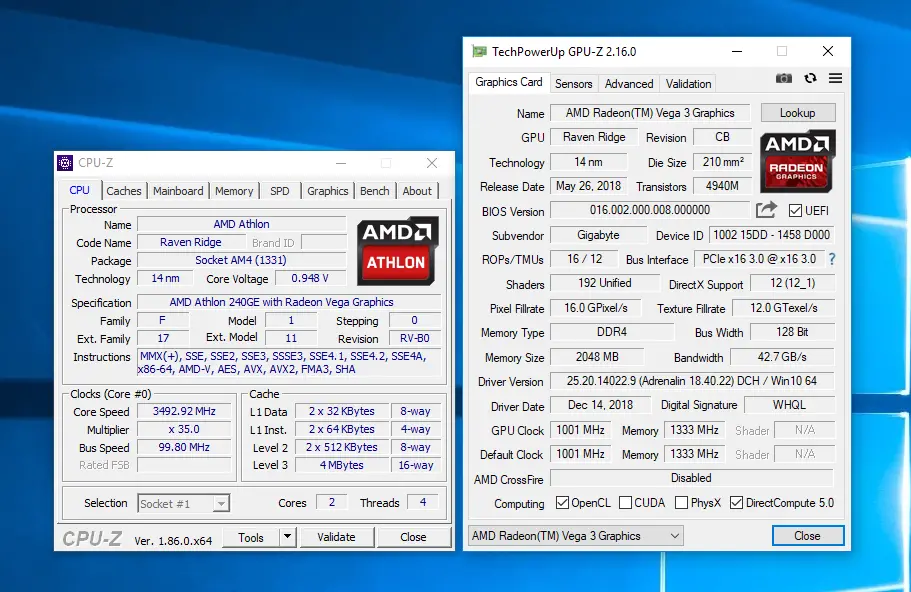
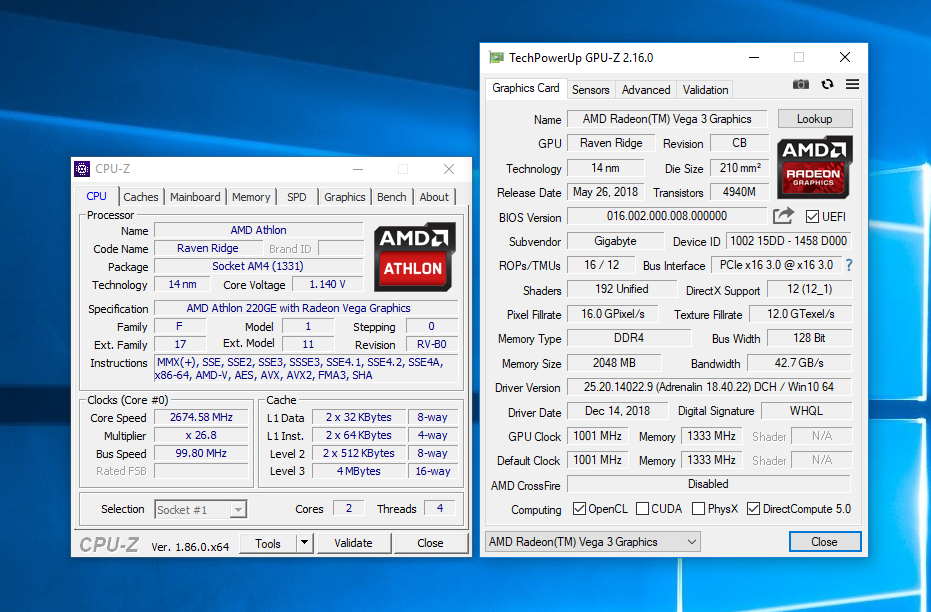
First look.
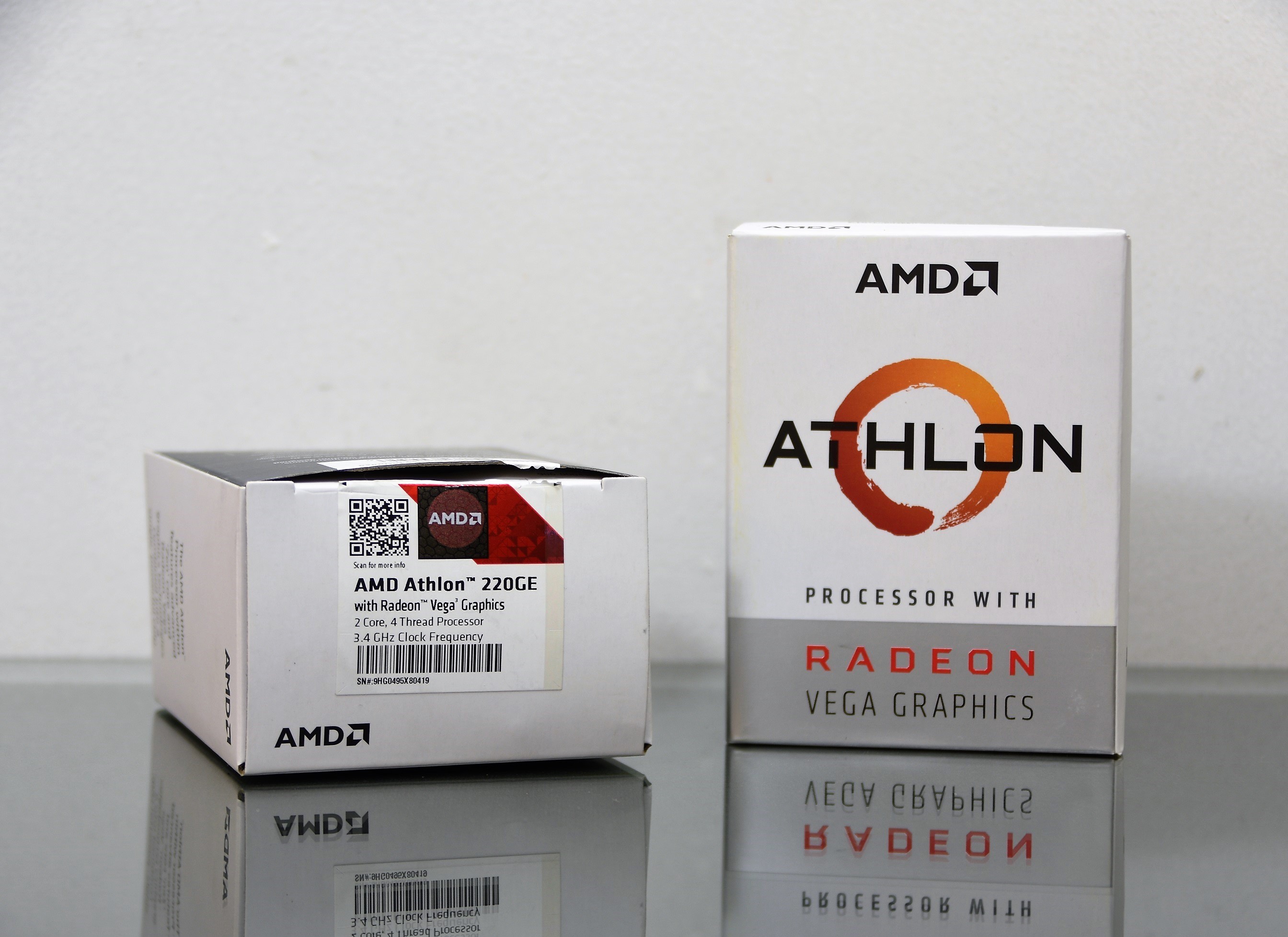
The packaging unlike Ryzen models, has a much smaller size.
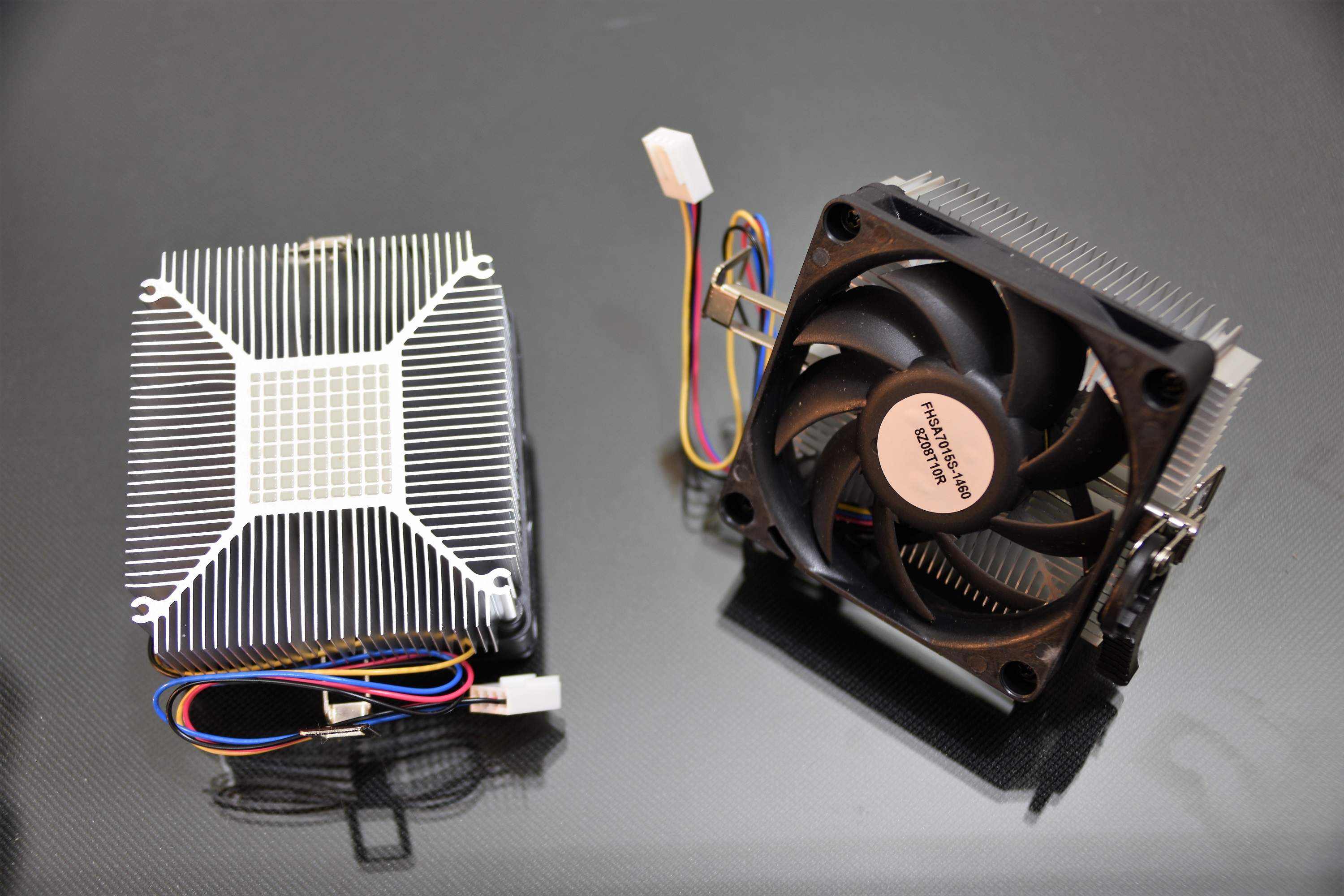
Internally we find the heatsinks, very simple.
Testing and Methodology Platform.
| Test Platform | |
|---|---|
| Processor | – AMD Athlon 220GE – AMD Athlon 240GE |
| Motherboard | – GIGABYTE AB350N-GAMING WIFI |
| Memories | – G. SKILL TridentZ 3200MHz 2x8GB |
| Graphics card | – Radeon Vega 3 |
| Refrigeration | – AMD Stock Athlon |
| Power supply | – Corsair RM1000X |
| Storage | – SAMSUNG 960PRO SSD M.2 512GB |
| Monitor | – ASUS MG28UQ |
- Windows 10 Pro x64 operating system.
- The tests were performed in an environment with a temperature of approximately 25 ° C.
- The platform was used without a cabinet.
- The drivers used for Radeon graphics cards were: Radeon Adrenalin 2019 Edition 19.2.1
- The resolutions of the synthetic tests are the default ones for each of the benchmarks.
- The real test resolutions are 1920 × 1080 and 3820 × 2160 with all the maximum available graphics in each game.
2D tests
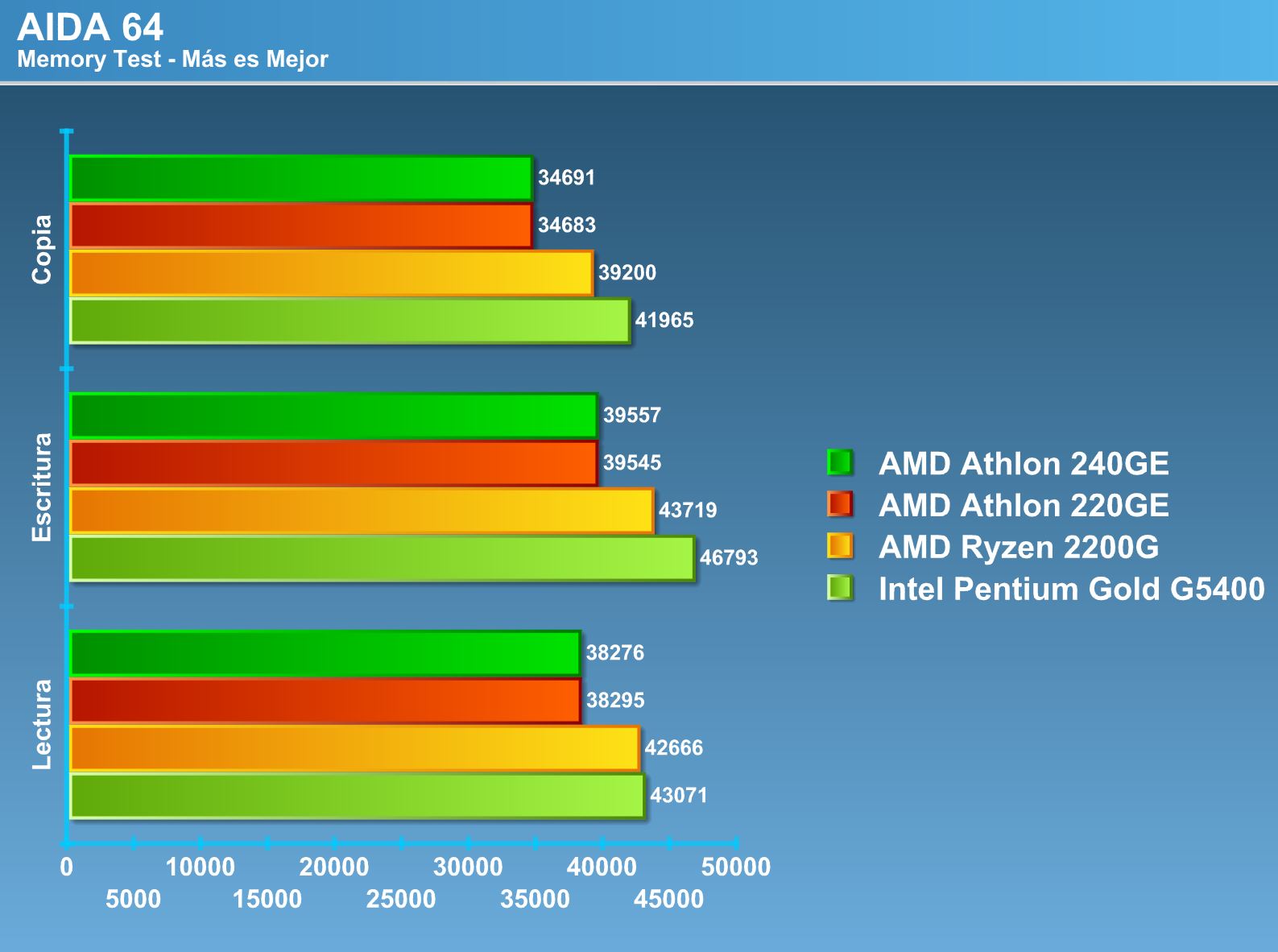
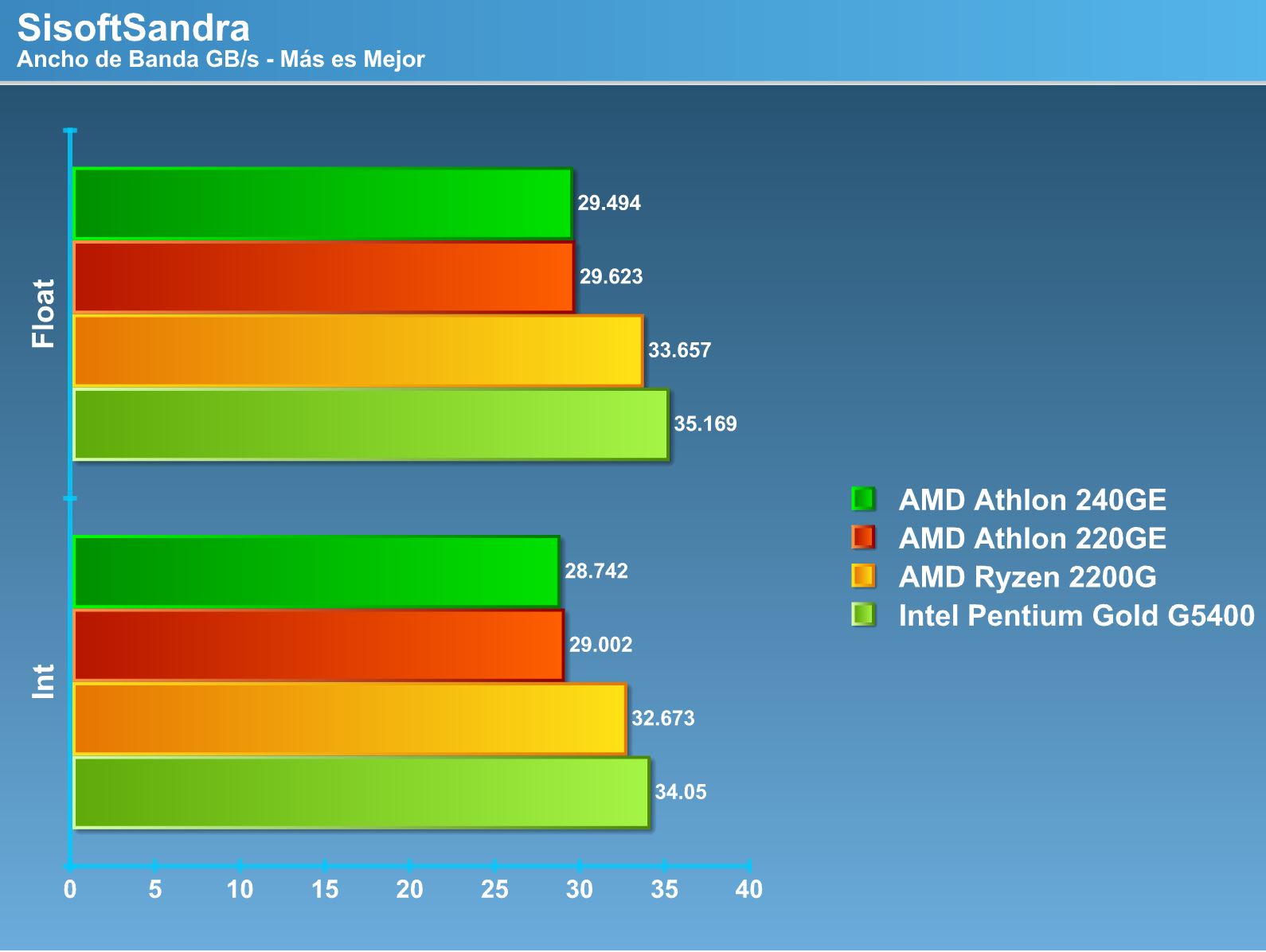
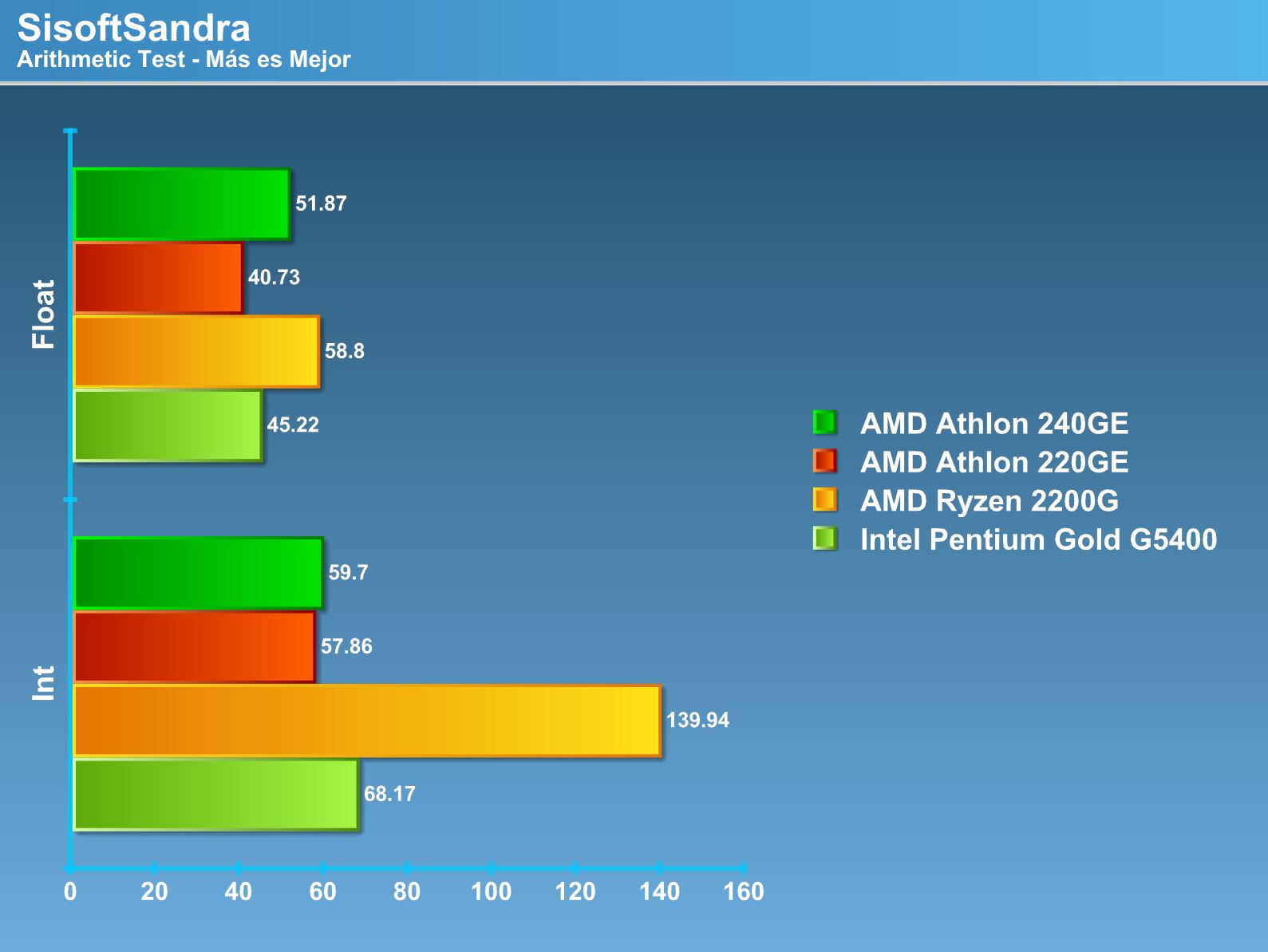
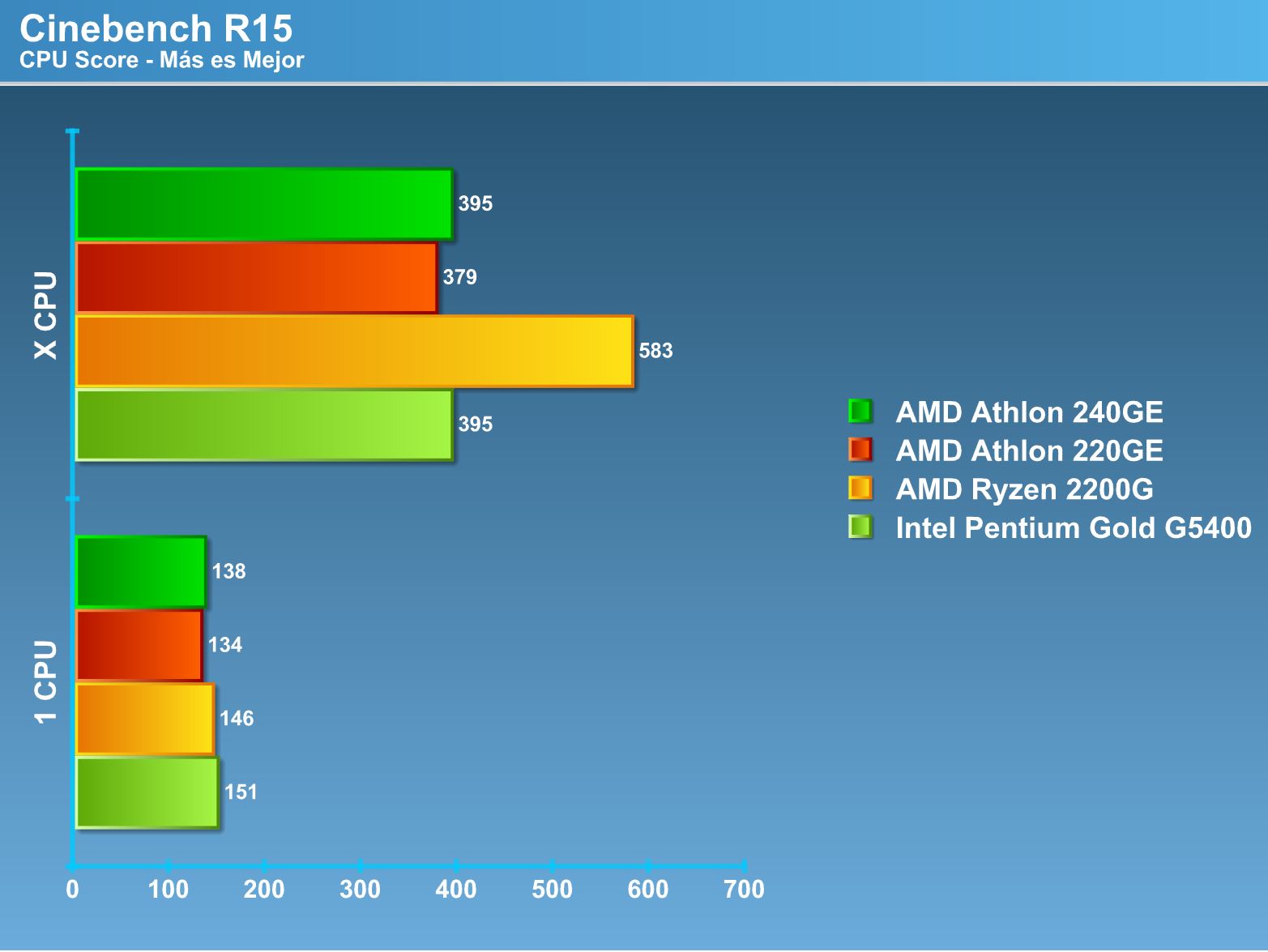
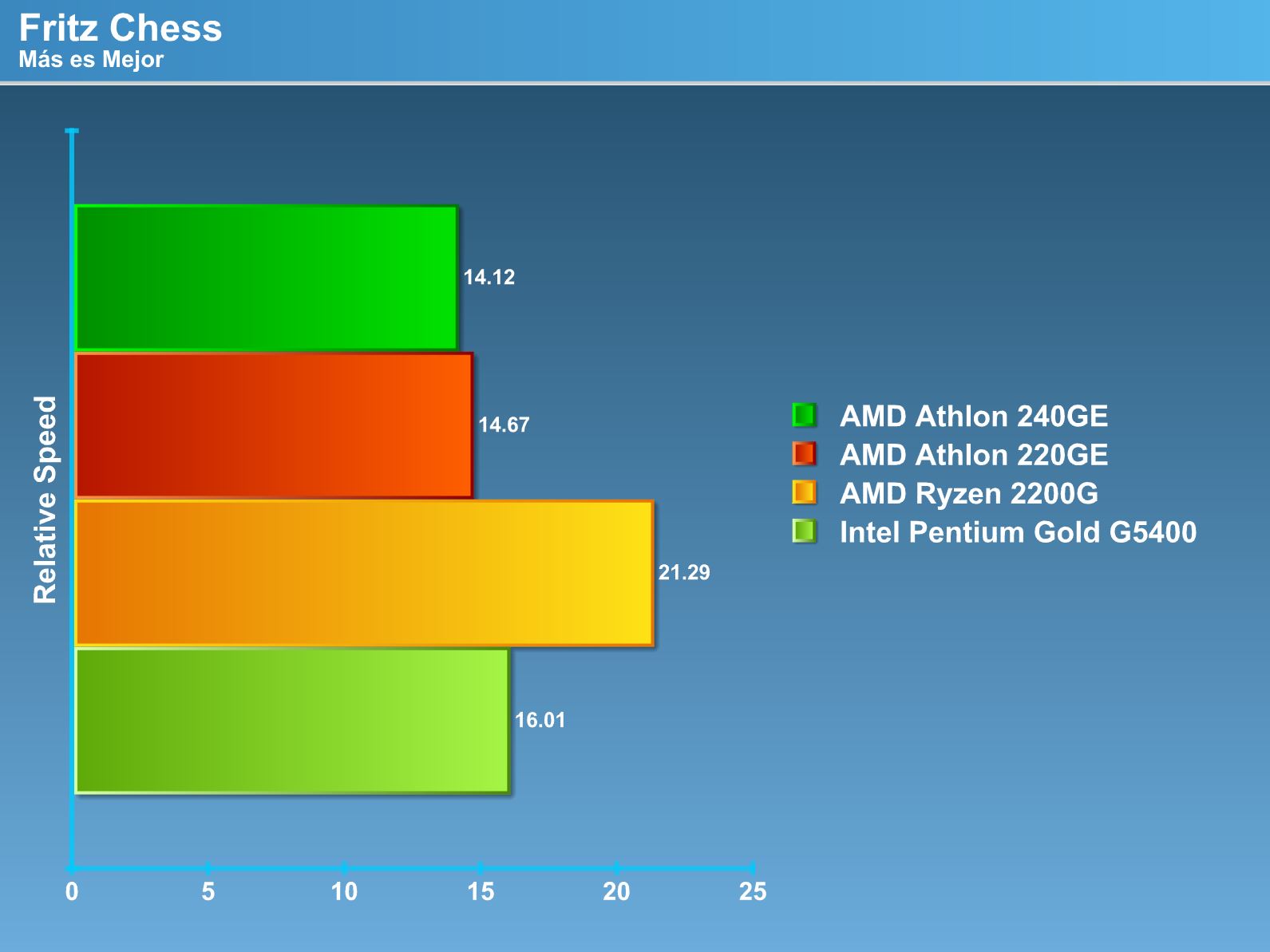
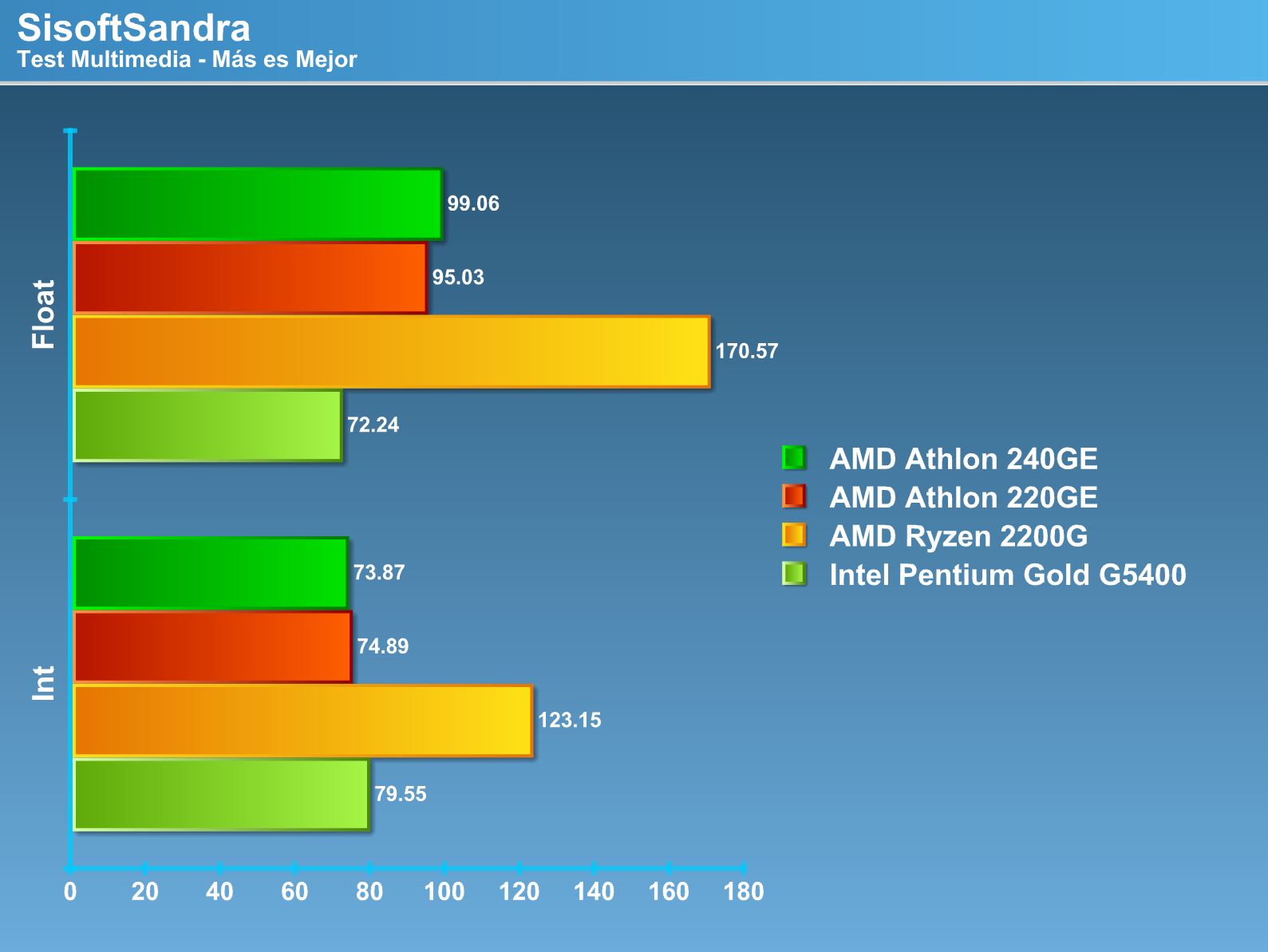
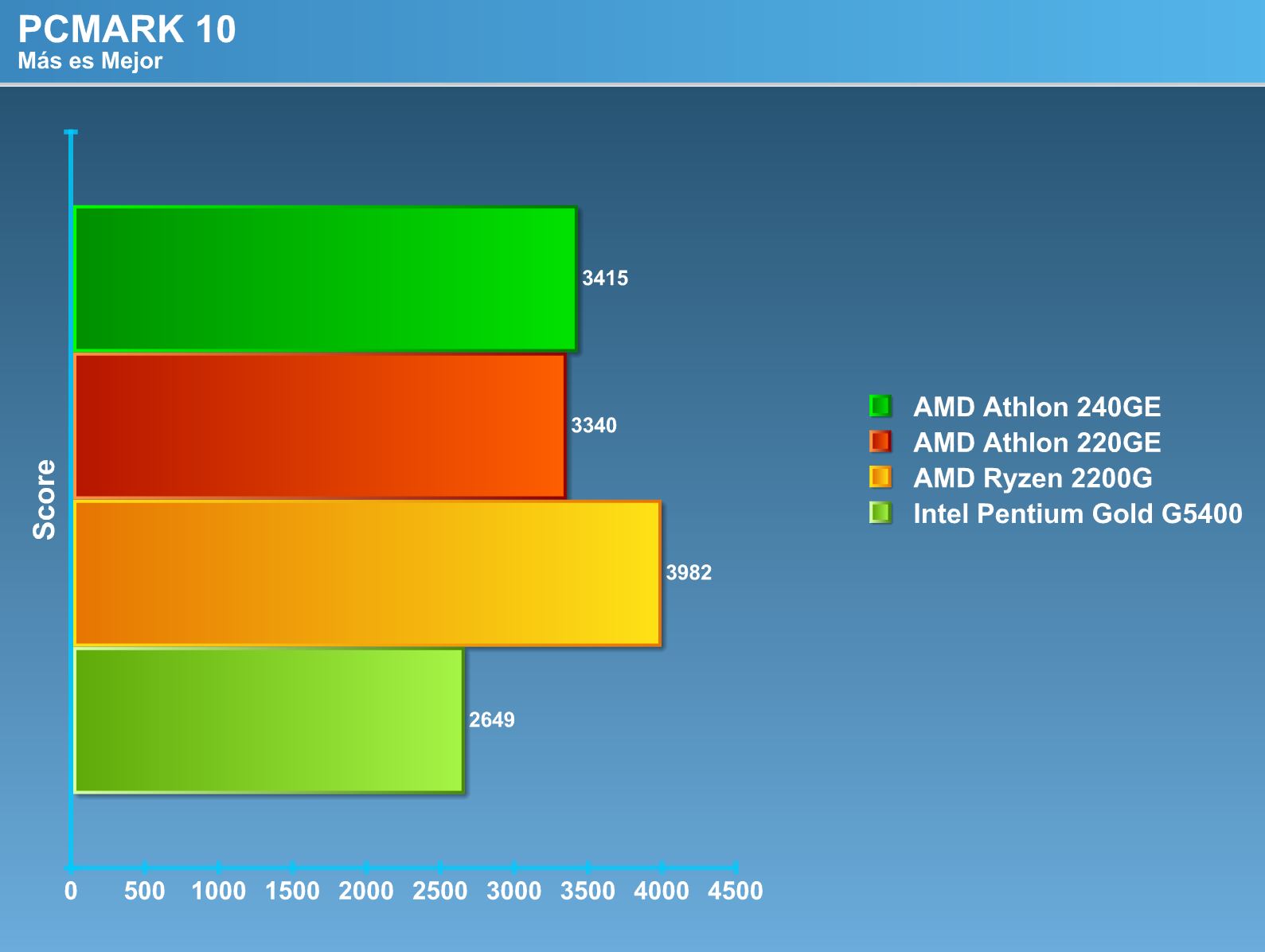
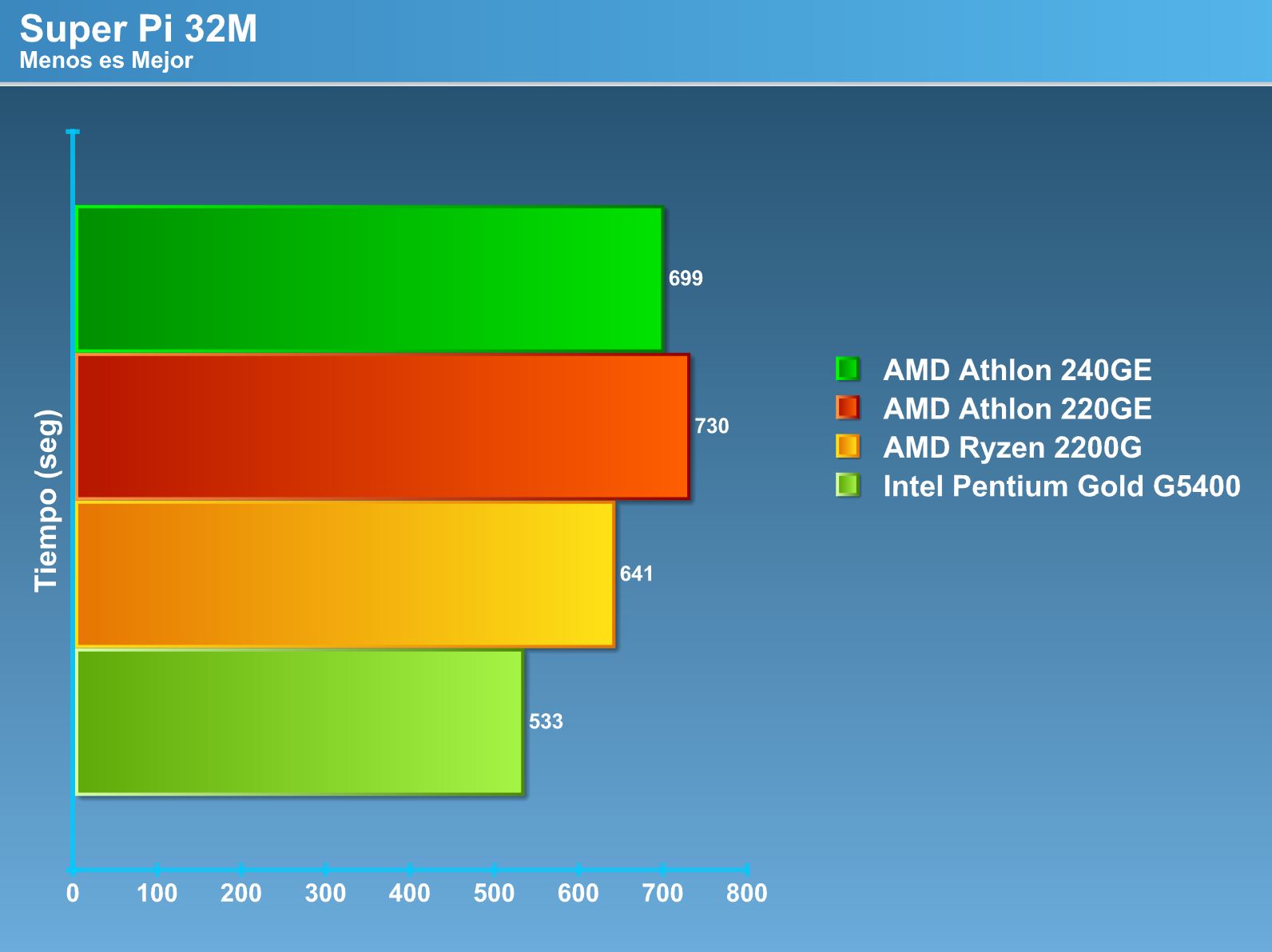
3D tests
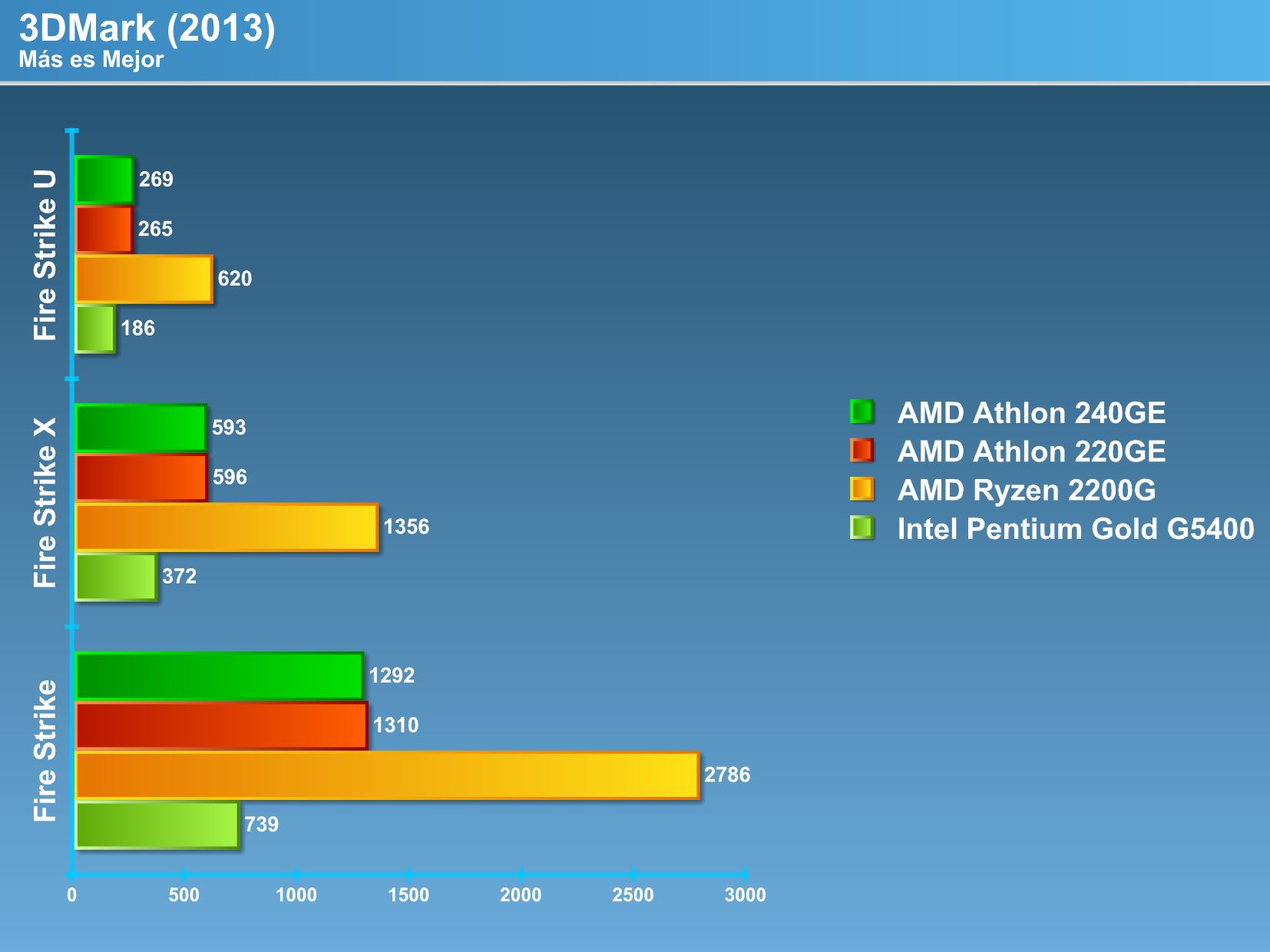
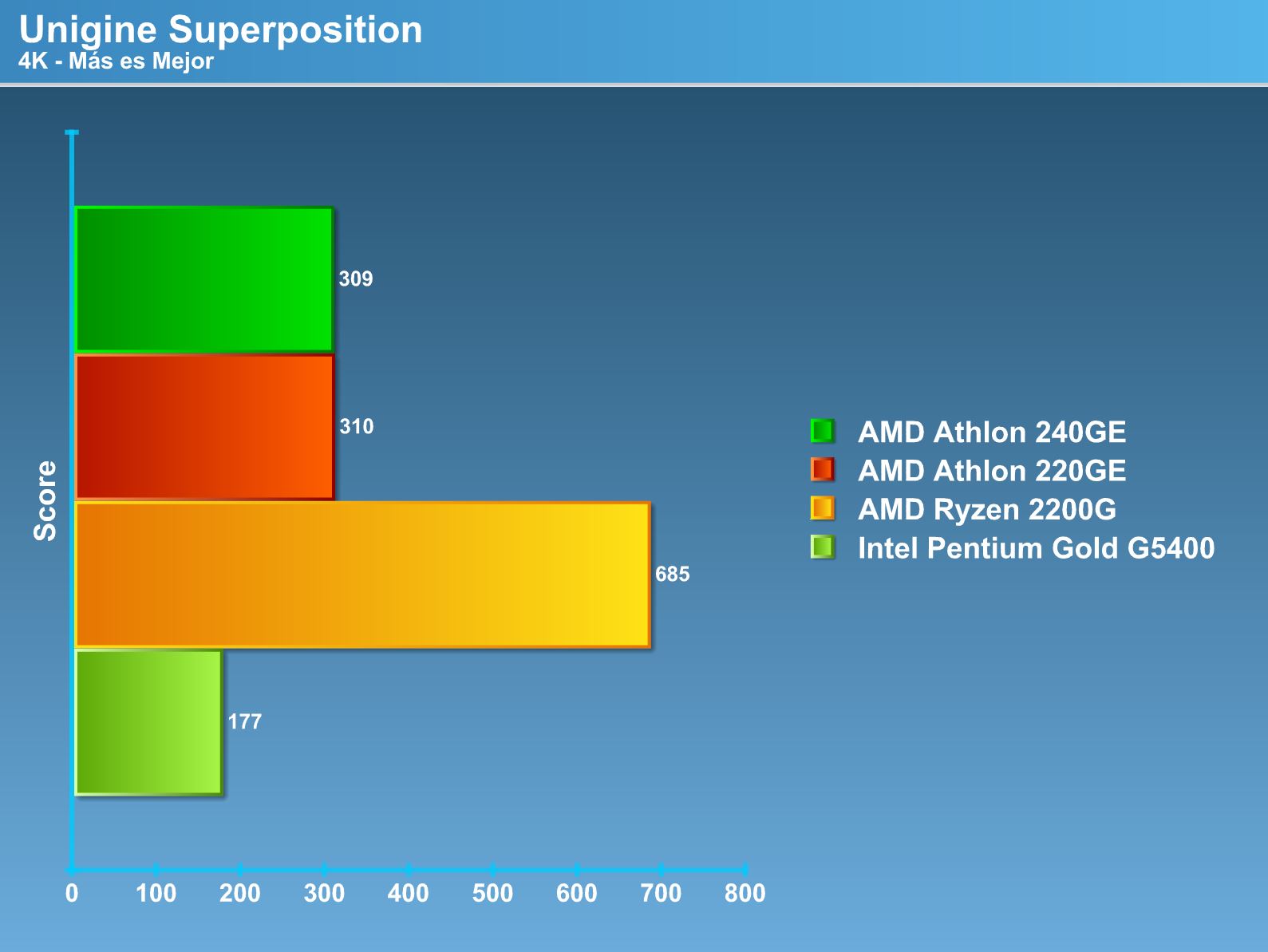
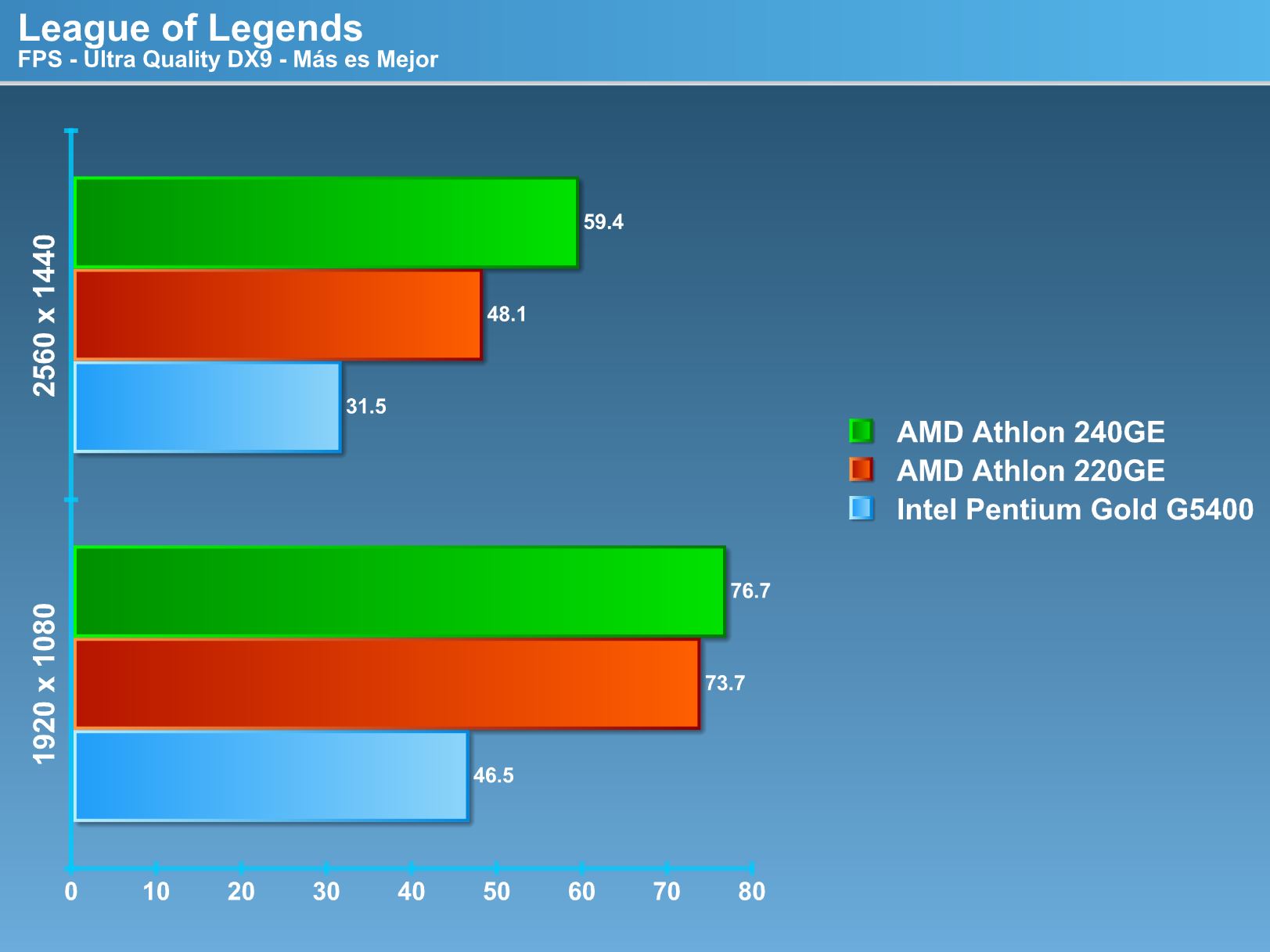
Temperature.
An important factor is the temperature. This is where we begin to detect the first component failures over time, the temperature has always been an enemy in terms of durability in the components of our computer, so keeping our platform cool will allow us not only to take longer the life of our components, but we could also a slight improvement in the performance of our system, especially when dealing with platforms with iGPU.
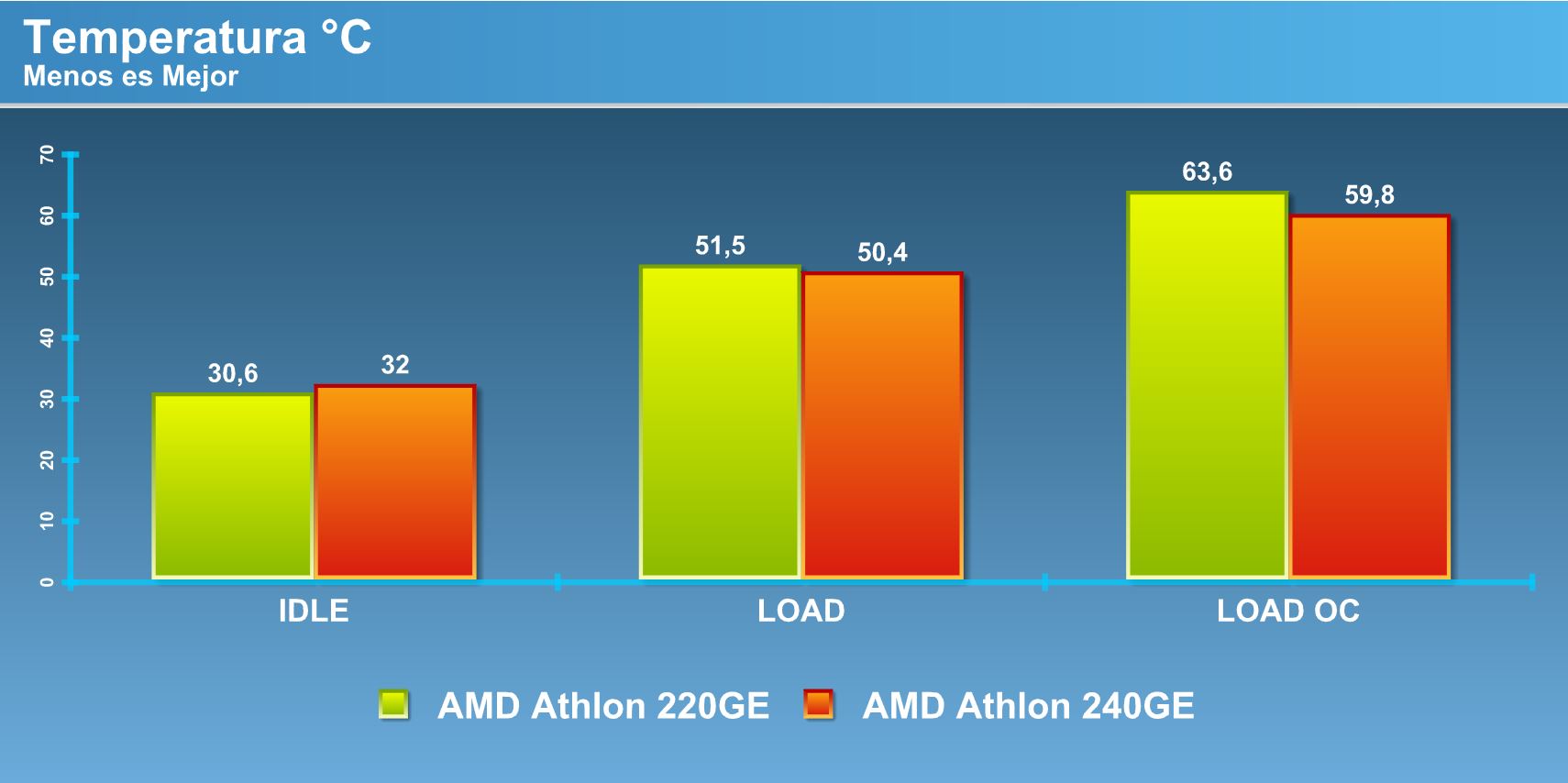
It was expected that a processor of these characteristics developed very low temperatures, at a constant load only 50 ° C pass through a couple of degrees, only under overclocking they manage to slightly exceed 60 ° C, which is still quite low, considering It is very likely that we will never see a processor of this working 100% for a long time.
Overclocking.
Thanks to the fact that in AMD we can develop overclocking in all processors (it will depend only on the board), the overclock for the Athlon will be admitted, a very important differentiator compared to what the competition in this range offers.
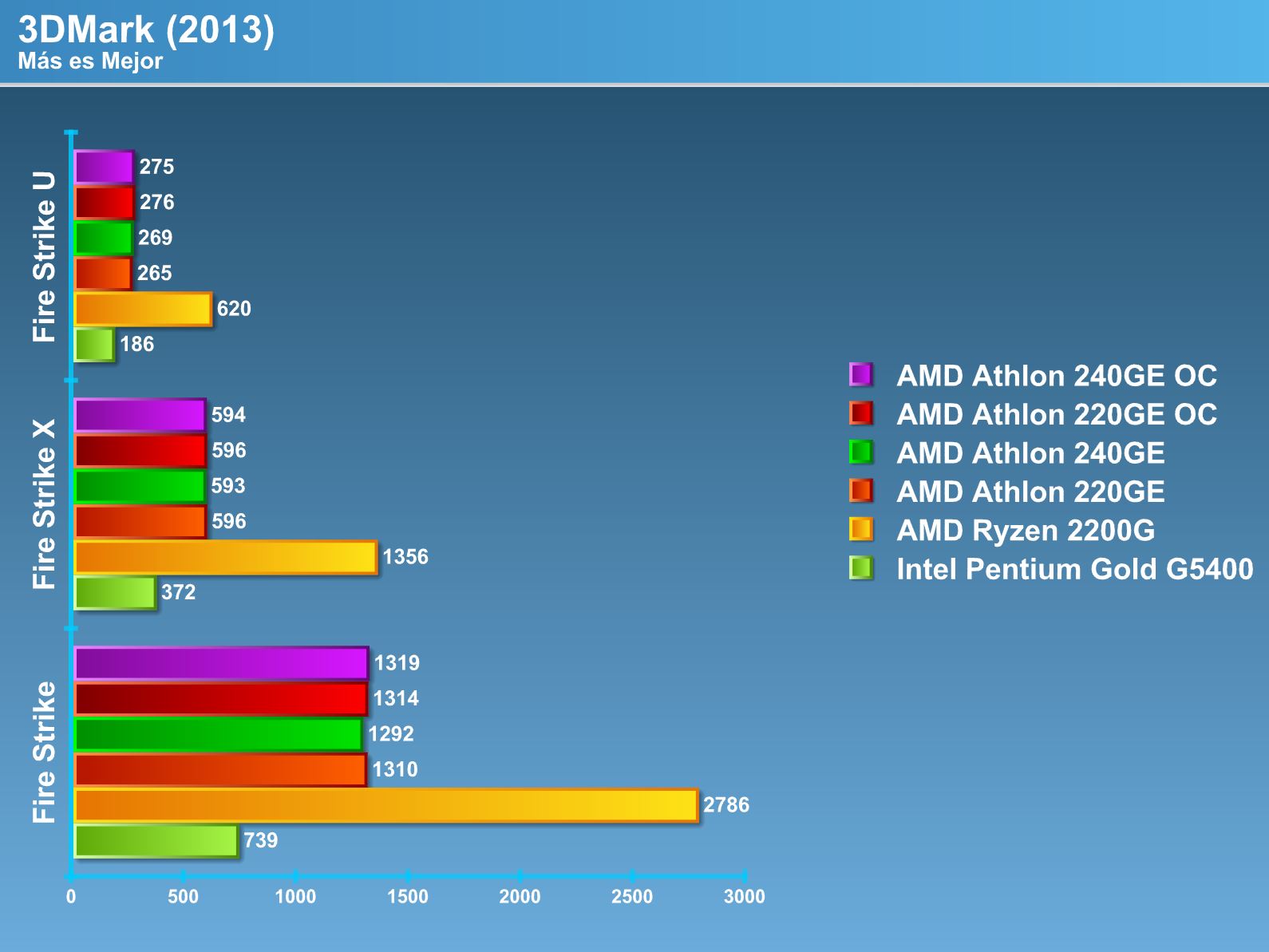
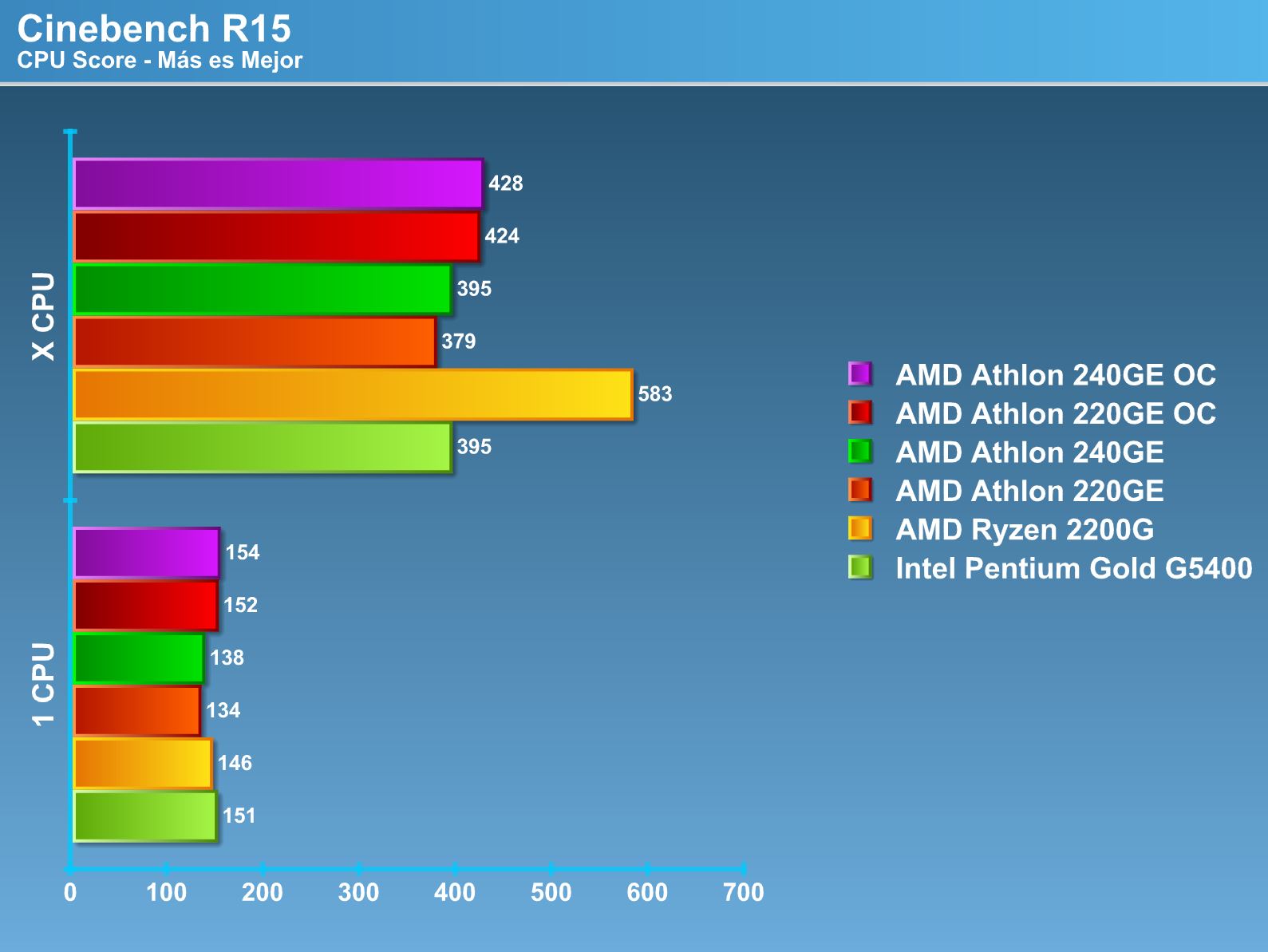
We can see the gain obtained through overclocking, a tool that gives great value to these processors managing to easily overcome the model offered by the competition, also considering that it is simple and that at the level of temperatures as seen above it is kept at a pleasant 63 ° C as peak temperature.
Conclusion.
The Athlon series brings beautiful memories of its passage through the AM2 and AM2 + socket. Thanks to that, AMD brings to life a family with history and great achievements pointing to the entry segment in what are the processors with Zen core.
Although in characteristics they are not at the level of a processor of the Ryzen range, if it has the same architecture, we could say that we are facing half (half of the cores) of a Ryzen 5 2400G with different frequencies and with one more iGPU reduced.
As far as overclocking is concerned, AMD Athlon clearly manages to develop a notable performance increase, which exceeds the blue side specimen without problem. In this aspect, the advantage of bringing unlocked overclocking and keeping the processor at low temperatures due to its low consumption are factors that give these models a great “plus” within this range.
In case the AMD Athlon series shows a versatile processor, boosting the platform not only to the office work of office but also shows small skills for occasional video games. Although the total performance does not show a superiority in what is 2D computing compared to the Intel Pentium, this makes up for it with its graphic section, aspect that many know AMD has highlighted since launching the APU solutions. We must be aware that for the segment to which it points, the user does not seek or peak performance in 2D or 3D, but is basically looking for a processor that can deliver productivity at the office level or that can occupy office software without problem , that is why Athlon leaves us with pleasure, since in case the Intel Pentium G5400 offers greater 2D performance which leads to 80% of the use of the processor within an office, these are rarely used for applications where the graphic section takes center stage, however when we take the use to a domestic platform where here we can even see a more equitable use between 2D or 3D use, the Athlon series could show its great skills, where the competitor does not have much to do.
The cooling system, despite considering it tiny, is capable of dissipating the temperature generated by these processors without problem, and together with this, maintaining a reduced noise, without any inconvenience to the user. In addition to the aspects of reduced temperature and low noise, the versatility of its size is added, which for small platforms the cooling solution does not generate physical discomfort, an example could be for the ASRock DeskMini A300W models.
Summing up what has been the experience of this AMD range, these processors are a balanced solution between 2D and 3D performance, it gives us an experience that is capable of satisfying without problems all the tasks we see daily under an office and multimedia use in the home, all this at a price within reach of the pocket.






![Review AMD ATHLON 220GE and 240GE [AM4] |](https://www.bitcoinminershashrate.com/wp-content/uploads/2020/01/1580285062_Review-AMD-ATHLON-220GE-and-240GE-AM4.jpg)









